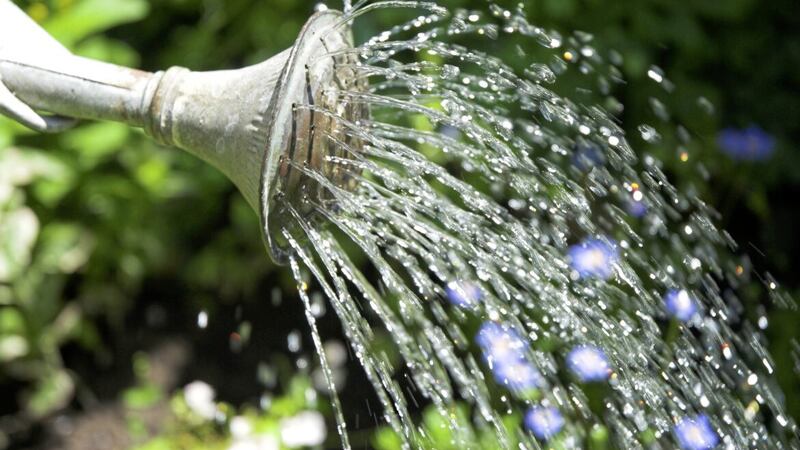There are some simple steps to take to protect your plants in the heat...
WHILE the north recorded its driest July for decades, it would appear that most of Ireland has so far avoided the drought conditions that have wreaked havoc on plantlife in southern England this summer. With the mercury soaring past 40C in some places, prized borders, hanging baskets and potted plants have been left withering and wilting. The implications for wild flora are much more severe, with many areas already experiencing a 'false autumn', where trees lose their leaves prematurely.
While sunshine and warmth are key components in summer growth, too much of both can cause stress and in extreme cases kill plants.
The experts at Gardening Express have offered some timely advice on caring for your plants when temperatures exceed 24C degrees, the optimum temperature for plants to flourish. At the most basic level, it involves moving plants into shade and watering them at the right time.
It's best to water plants before or after the sun has hit its peak as they won't really get the benefit at the hottest point of the day. Watering needs to be carried out when it’s slightly cooler to give the plants the chance to really soak up the water. A lot of people also think they need to give plants a lot more water in the heat, which isn’t necessarily true. If anything, you could be damaging your plants further by over watering them, so giving them an early morning or late night drink once a day will suffice.
Another common misapprehension is that plants require fertiliser in hot conditions to make them stronger. It's actually recommended to avoid feeding during warm spells because adding fertiliser triggers plant growth, meaning more nutrients and water is needed. This would be hard to sustain in hot conditions, as the soil will be drying out quicker and your plants won’t really be able to absorb water properly in the heat.
Just like people and animals, mad dogs and Englishmen notwithstanding, plants like a bit of shade when it gets too hot. If your plants are in pots, you can simply move them to a cooler area of the garden. If your plants are in a bed or border, there are ways you can create a bit of shade. In extreme cases, you can use anything from a white bedsheet to maybe an old net curtain. Just simply pin or hang it above the area of your plants to protect them from the sun.
Another longer-term solution to ensure your plants have access to moisture is to use a mulch to lock it in. Mulch is a layer that you can put on top of your soil to act as a bit of a barrier between the sun and the soil to prevent it from drying out. Soil dries out very quickly in high temperatures, so it’s a good idea to put a one-to-two inch layer of organic or non organic matter around the base of the plant that will slow evaporation.
For containerised plants, the choice of pot can have a bearing on how quickly, or slowly, the growing medium will dry out. Black pots will attract the heat, which can damage your plants. Similarly, pots made from terracotta that are left unsealed can lose moisture quickly, which means that your plant is at risk of being dehydrated. Aim to get pots that are sealed and light in colour in order to reflect the sun and give your plant the best environment in a heatwave.








